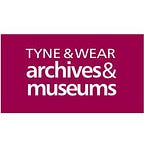How the Pride flag came about & other vintage LGBT+ protest badges
By Helen Vasey, Assistant Keeper of History, Discovery Museum
The Pride rainbow flag was debuted in 1978 in San Francisco, USA. It was designed by the artist Gilbert Baker and commissioned by Harvey Milk, a local politician in San Francisco. Since 1978, there has been a variety of designs and the colours used have changed over the years.
Each colour has a meaning: Red = life, Orange = healing, Yellow = sunlight, Green = nature, Blue = harmony, Violet/purple = spirit. The rainbow flag represents the diversity of the LGBTQIA+ community. It is also thought to reference Judy Garland and her most famous song, ‘Somewhere over the Rainbow’, as she was, and remains to this day, an icon for the Gay community.
More recently a new flag has been used, the Progress Flag, which incorporates the original rainbow flag alongside black and brown stripes, to represent People of Colour within the community, and blue, pink and white stripes, to represent the Trans community.
Before then, the most commonly used symbol for the LGBTQIA+ community was a pink triangle, despite its negative connotations with the Nazi party, who used it to identify and label LGBTQIA+ people in the 1930s and 1940s.
Castro and Polk Street are streets within the gay neighbourhood of the Castro in San Francisco, USA. San Francisco is important in the history of LGBTQIA+ rights. Many firsts happened here, including the first openly gay politician (Harvey Milk), the first openly gay judge in the USA and the debut of the rainbow flag in 1978.
Buttons and badges have a long history of promoting causes and expressing points of view. The earliest examples of this, starting c1757 are abolitionist medallions.
In the 1960s and 1970s badges started to be used as a fashion accessory, as well as symbols of protest. The punk movement of the late 1970s took this to next level with jackets adorned with band and protest badges.
In 1988 Clause, or Section, 28 was passed by the UK government. It prevented schools from teaching about same-sex relationships to children. The law was repealed in Scotland in 2000 and the rest of the United Kingdom in 2003.
This t-shirt is from the 1989 Gay Pride parade. The date 1969 refers to the Stonewall Riots which happened in New York and which many people consider to be the start of the gay rights movement. This t-shirt commemorated the 20th anniversary of the event.
A programme for 2001’s Pride on Tyne in Newcastle.
These objects are from Northern Pride held in Newcastle upon Tyne, from 2013 and 2014.
We protect and preserve 1.1 million items in our collection. Now more than ever we believe art, culture and heritage sits firmly at the heart of the North East, help us keep it there. Donate today.
